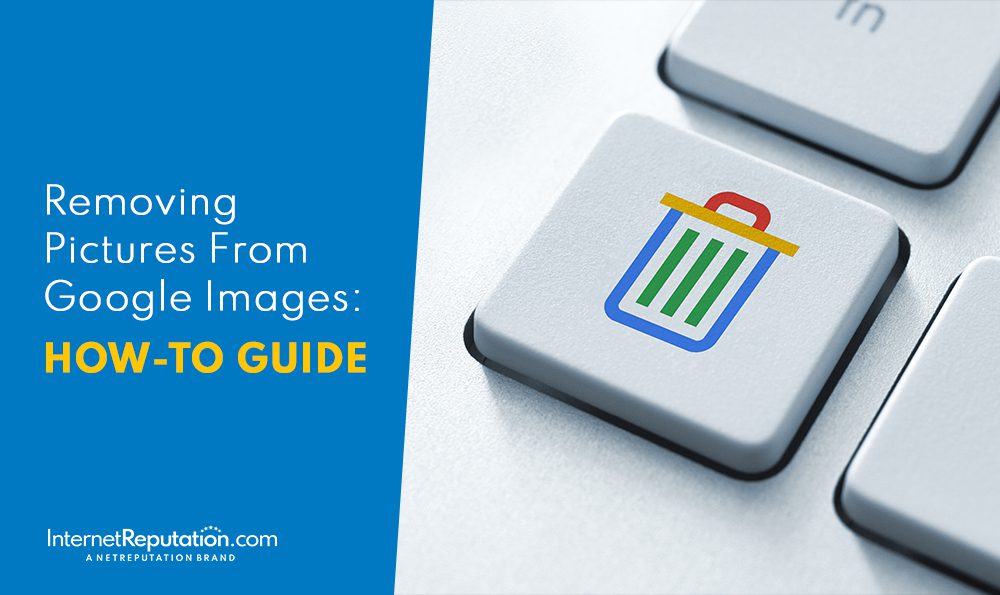How to Use a Social Network in Marketing to Build and Protect Your Online Reputation

Learn how to use your social networking in marketing for a better online reputation management strategy overall.
Today, no digital marketing strategy is complete without social media marketing (SMM). Social media marketing refers to the use of social media platforms — like Facebook, Instagram, LinkedIn, Pinterest, or TikTok — to promote an individual, brand, product or service.
Successful social media marketing includes creating, curating and sharing content; engaging with your target audience; analyzing your performance; and, oftentimes, creating ads.
In other words, a social media marketing strategy utilizes multiple platforms to connect with your target audience and reach business goals.
Your social network refers to the social media platforms and online communities where your audience connects, interacts and shares content with one another and your brand.
Social Media Marketing and Online Reputation Management
Another aspect of online marketing we should discuss is online reputation management. Social media marketing and online reputation management (ORM) are closely linked, as both strategies use digital platforms to promote a brand. Social media sites and apps are tools that ORM experts use to showcase brands, engage with customers and share positive content.
InternetReputation.com provides the information and services you need to protect your digital presence. Get started with a free online reputation analysis by calling 941-259-4554 today.
Why Do Social Networks Matter for Your Online Reputation?

Social networking sites are often the first place people learn about your brand. That means that social media marketing platforms give your audience the first impression of you or your company. Even when it comes to Google search results, social media channels are often prioritized and listed high on the search engine results page (SERP).
Another reason why social channels matter so much for your brand is that they host a lot of user-generated content (UGC). Everything from casual brand mentions to customer testimonials and reviews can be found on social media. And if people like your brand, social media users may post photos or videos featuring your products.
Here are three more reasons for having a social media marketing strategy:
Connections: The relationships you build on social media marketing platforms with customers, employees, industry peers and influencers have a direct impact on your online reputation. Having a strong network presents you as an authority in your field. On the other hand, neglecting your network can hurt your brand identity.
Daily Interactions: When it comes to most social media platforms, your daily marketing efforts matter more than your big campaigns. By being tuned in to your social media accounts every day, you can quickly respond to a customer query or complaint. This shows your audience that you care about their experience with your brand.
Customer Data: Smart social media marketers know to regularly check the valuable insights that their social media accounts collect. By learning key metrics about audience behavior and preferences, you can spot a problem before it worsens and double down on the strategies that are working in your favor.
We can help you create a social strategy, even if you’re starting from zero. Call us at 941-259-4554 for more information.
Social Media Marketing Statistics
- On average, users spend nearly 2.5 hours on social media per day and are on 7.5 platforms each month.
- Over 76% of internet users go on social media to learn about brands and products, and 68% of consumers use social platforms to stay updated about new products and services.
- 34% of consumers use Instagram and 23% of consumers use TikTok as local business review platforms.
- When using social platforms to connect with brands, nearly 70% of consumers expect a same-day response, with many wanting to hear back within hours or even minutes.
How To Build a Positive Reputation With Social Media
Now, let’s discuss all the ways that social media marketing can help with your company’s brand reputation.
Create Consistent, Value-Driven Content
There’s a lot more to creating engaging content than simply putting together an article or video that you think is interesting. Follow these tips to develop content that reflects your brand image and appeals to your audience.
Align Content With Your Brand Values: Every social media post should reinforce your brand and speak directly to your audience and their interests. By tying your message to your brand mission and your customer’s needs, you’ll create posts that are authentic and trustworthy.
Vary Your Formats and Topics: Develop a social media marketing plan that uses various platforms where you can develop different types of content that cover a broad range of on-brand topics. Social media platforms offer everything from article publishing to creating video content. Mix up what you share and where you share it to appeal to different segments of your audience.
Stay Consistent: The most obvious way to stay consistent when it comes to your social media usage is to publish content regularly. However, to increase brand awareness, you’ll need more than that. Consistency also refers to maintaining the same type of design, messaging and tone across all your content and platforms. By developing a reliable presence, you’ll improve brand recognition and build trust.
Avoid Controversy: It’s OK for brands to sometimes share bold opinions, especially if they specifically relate to your brand and your audience. However, make sure that you don’t stir up so much controversy that you push away your core audience and damage their trust in you.
Actively Engage and Respond

Now that you know what type of content to post, let’s discuss strategies for responding to Facebook users, TikTok users and others from your audience. By actively participating in the conversation surrounding your brand, you’ll show your audience that you value them and are committed to improving their experience with your brand.
Most importantly, always respond to comments and direct messages, whether they’re positive or negative. Ignoring positive feedback, questions, or criticisms will make consumers feel like your brand isn’t approachable. Instead, reply as soon as you can, ideally within one day.
To make this possible, you may need to use listening tools so you never miss a brand mention. These tools work by monitoring the internet for branded words and phrases, then alerting you when a new one pops up. This gives you the opportunity to monitor customer sentiment, gather feedback and respond right away.
Something else to keep in mind when engaging with your audience is to humanize your brand. Whether it’s casual and friendly or serious and professional, your brand should maintain the same personality and tone at all times. Even the most buttoned-up brands can be empathetic in their language, avoid jargon, and sound thoughtful instead of robotic.
Leverage Social Proof
When it comes to effective social media marketing, letting your loyal fans and customers speak on your behalf is a wise strategy. Part of your social media efforts should go toward leveraging social proof, including:
- Case studies
- Reviews
- Testimonials
- User-generated content
By letting others speak for your brand, you’ll show potential customers that people just like them love and benefit from what you offer. Share screenshots of positive comments or reviews, re-post photos of customers using your products, and showcase case studies as video content.
To kick this up a notch and reach your business objectives faster, foster relationships with brand advocates and influencers. By partnering with popular accounts in your niche, you’ll expand your customer base and generate leads faster than before.
Pro Tip: Work with influencers who product authentic content that aligns with your brand values. Audiences are sensitive to insincere content and marketing, so you don’t want to turn them off by picking the wrong influencer.
3 Types of Social Media Marketing Content To Understand

Before you launch into creating your new social media strategy, it’s important to understand three important types of content: sticky content, viral marketing and earned media. Let’s go over each one.
Sticky Content
This type of content is purposely designed to capture a customer’s attention and keep them engaged over time. You want your target audience to repeatedly interact and return to your content, and you want them to linger for a while when they’re there.
Examples of sticky content include:
- Guides
- How-to videos
- Infographics
- Tutorials
Your sticky content should provide ongoing value, build familiarity with your audience, and encourage customers to be loyal to your brand. You can do this by helping them get the most out of your products and services and improving their lives.
Viral Marketing
The purpose of viral marketing is to create content that’s highly shareable and has a good likelihood of spreading fast across one or several social networks. To do this, the content should evoke a strong emotion, such as curiosity, humor, inspiration or surprise. Users should feel compelled to share what they found with others.
Examples of viral content include:
- Challenges
- Memes
- Short videos
- Striking visuals
However, even if you’re developing viral content for the sake of building brand awareness fast, remember that you still need to stay aligned with your brand values.
Earned Media
This is the most difficult type of content to harness because it depends on what others create about your brand. Earned media is the attention and coverage that your brand receives from customers, the press and users.
Since earned media is created organically by trusted sources, it’s one of the most credible types of marketing you can get. Your reputation will be amplified as real people and media outlets endorse your brand.
Protecting Your Reputation on Social Media Platforms
While social media marketing offers numerous opportunities to improve your visibility and connect with your audience, there are also significant risks every brand faces. A negative comment, thoughtless post or complaint that goes viral can damage your reputation before you know it.
To protect your brand on social media, you have to be proactive. By having a solid social media strategy in place for the good times and the bad, you’ll minimize potential damage when challenges pop up.
Monitor Brand Mentions in Real Time
To protect your reputation, your social media marketing plan should include real-time monitoring of brand mentions. The only way to stop a problem in its tracks is to know it’s coming toward you.
There are plenty of tools out there to help with social media monitoring, from Google Alerts, which is free, to more robust software like Hootsuite and Sprout Social.
Have a Crisis Communication Plan

Everything from one negative comment to a misleading news article to a product recall can result in a social media and online reputation crisis. You need a clear crisis communication plan for the events that you hope never occur.
Here are the basics of communicating during a PR crisis:
Designate Roles: Assign different team members to important tasks, such as drafting responses, approving messaging and posting the communication.
Adapt Templates: Your crisis communication plan should have pre-drafted templates that you can update and customize based on the situation. This will save you time and reduce errors when you’re under pressure.
Respond Fast: Acknowledge the situation ASAP to show the public that you’re aware of what’s happening and are addressing it.
Be Transparent and Consistent: Share accurate information with the public, and never misrepresent the facts. Additionally, make sure that every platform shares the same information to avoid confusion.
Show Empathy: Express that you understand how the situation is impacting the public, especially your customers and stakeholders.
Stay Calm: Your messaging — and the brand representatives who are delivering it — should be composed and authoritative.
Our clients come to us when they need to build or repair their online reputation and take control of their digital presence. Call us at 941-259-4554 to learn more.
Manage Negative Feedback with Grace
Part of social media marketing is handling negative feedback with empathy and professionalism. The way you respond to even the unhappiest of customers can make or break your reputation.
First, respond without escalating the problem. You want to calmly acknowledge the situation and take constructive steps to remedy it; you don’t want to get defensive.
Never argue with the customer or blame them for what went wrong (even if, behind the scenes, you know they’re in the wrong). Don’t be dismissive, either, as this will only upset the customer more and draw extra attention to the issue.
Thank the customer for their feedback, show that you understand their situation, apologize for their bad experience (and possibly your brand’s role in it), and then discuss the steps you’d like to take to fix the problem.
Hopefully, this will diffuse the tension, and you can be on your way to resolving the problem. Even if the customer is impossible to please, though, your public reply will be seen by others, and they’ll form an opinion based on how you handled the situation.
Second, take the conversation offline to wrap up. While the initial response should be public, the rest of the conversation should happen one-on-one. This is especially important if the situation requires complex problem-solving or the exchange of personal information, like a mailing address.
By moving the conversation off social media, you can spend as much time as needed communicating with the customer and thoroughly handling the problem.
Integrating Social Media Marketing Campaigns Into Your Broader ORM Strategy

To help your social media marketing have the best possible impact on your reputation, align your campaigns with larger brand marketing and identity goals. For example, coordinate with your company’s PR and SEO teams to work toward the same objectives.
It’s also important that your messaging and tone are the same anywhere your customers may interact with your brand, whether that’s in Google Search, your Facebook page, mobile advertising, etc. Being consistent reduces confusion and builds confidence in your brand.
Lastly, repurpose social media marketing content to create authoritative, high-value content without having to develop something brand new. Case studies, educational resources and well-performing posts can be reused on different marketing channels to get more traction out of them.
Wrapping Up: Moving Forward With Your Social Media Marketing Strategy

Having a well-managed social media plan can strengthen your brand’s online reputation and improve customer satisfaction. And while damage control is a necessary part of digital marketing, being proactive is the best defense against problems.
To build a social media presence that both protects and promotes your online reputation, contact our experts today. Whether you’re prioritizing your personal or professional online reputation, our advice, services and team of experts can help.
Get in touch with us by calling 941-259-4554 today.


